The Kennedy Myth and Civil Rights
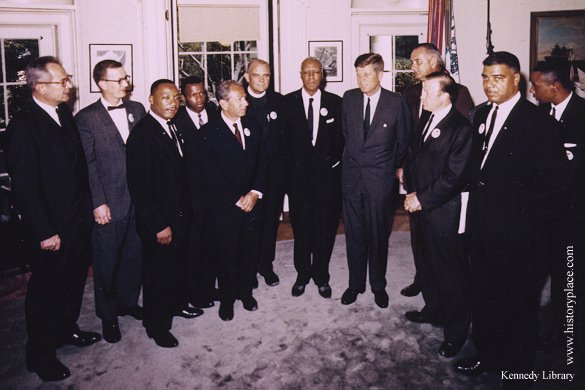
The Kennedy Administration Provided Only Reluctant Support for Civil Rights-- At Least Until 1963
President Kennedy Meets with Leaders of August 1963 March on Washington
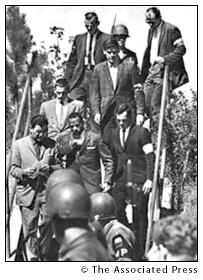
However, Kennedy's Desire to Maintain the Image of an Activist President: 1) Gave Legitimacy to Civil Rights Cause, 2) Made Him Responsive to Civil Rights Pressures, and 3)
Encouraged Youth Activism on Civil Rights Issues
Federal Marshals escort James Meredith to enroll at the University of Mississippi in 1962
Kennedy's Domestic Policy
The Politics of Consensus
Tax Cuts to Stimulate Middle-Class Consumer Spending and Revive the Economy
Experimentation with Antipoverty Programs
The Problem of the One-Party South
Narrow Margin of Victory over Nixon means Kennedy is a President without a Mandate
Congress' Conservative Majority: Alliance Between Republicans and Southern Democrats.
Southern Democrats Are Disproportionately Powerful in Congress because of Congressional Seniority System and Lack of Republican Opposition in the South
Since 1930's, Southern Democrats had insisted on States' Rights and Control over Local Management of Federal Programs and No Federal Policy on Race in return for their Support
Kennedy and Civil Rights Before the Presidency
A Mixed Record, Supports Southern Position on Crucial Amendments to '57 Civil Rights Bill
Southerners See Him as a Moderate Alternative to Humphrey in '60 Democratic Primaries
Kennedy Wins Black Votes in 1960. Why?
Black Voters' Loyalty to Northern Democrats because of Civil Rights track record at state and local level
Nixon Downplays His Civil Rights Records in order to Appeal to the White South
Kennedy's Campaign Tactics: 1) Promised an executive order barring racial discrimination in federal housing programs "with a stroke of my pen." 2) Made a Phone Call to Coretta Scott King After Dr. King's Oct. 1960 Arrest in Atlanta Sit-In. Robert Kennedy Successfully Pressures Georgia Judge to Release King. Kennedy Campaign Publicizes These Efforts to Northern Black Churches the weekend before the Election.
Kennedy's Civil Rights Pattern
Offers Rhetorical Support
But Is Reluctant to Act Against Southern Democrats
Eventually Succumbs to Activist Pressure
Example: Housing Discrimination Executive Order. Kennedy delayed signing the order for 2 years until NAACP letter-writing floods White House with ballpoint pens.
Kennedy Pattern Ironically Reinforcs Civil Rights Protest Strategy: Seek To Create a National Crisis that will force Federal Government to Act
The Segregationist Response
Use Congressional and State Power to Block Civil Rights Reforms
Seek to Create a Different Script of Civil Rights Protest 1) Southern State and Local Officials Are Simply Training to Maintain Law and Order, 2) Civil Rights Protesters are the Real Provocateurs of Violence and Disorder 3) Federal Government Is Acting to Suppress States' Rights By Intervening on Civil Rights Issues
The Freedom Rides
Classic Example of Kennedy Civil Rights Pattern
1) Freedom Riders Force Confrontation and Crisis At Every Stage
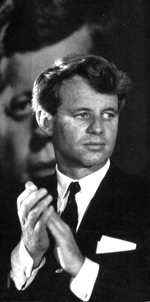
2) Attorney General Robert F. Kennedy Attempts to Convince Southern Officials to Protect Riders' Right to Travel in this Case
Attorney General Robert F. Kennedy
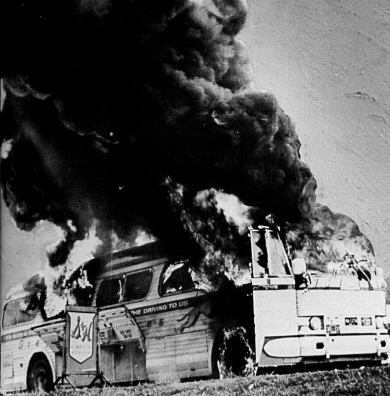
3) Alabama Governor Refuses to Act and Accuses Riders of Fomenting Violence
Bus Burns After Freedom Riders Attacked in Anniston, AL
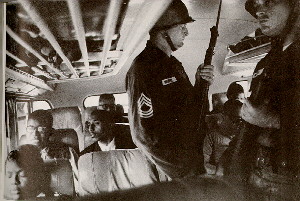
4) After Mobs Attack Riders, first in Anniston and then in Montgomery, AL, Kennedys Are Forced to Use Federal Marshals and Troops to Protect Riders
Federal Troops Protect Freedom Riders as They Travel Westward from Montgomery, AL
5) Kennedys Negotiate Mississippi Deal: Governor Guarantees No Mob Attacks, but Arrests Riders for Using Segregated Facilities in Jackson Bus Station.
6) During Summer '61, 300 Riders Sentenced to MS's Parchman Prison
7) Finally, Kennedy's Convince Interstate Commerce Commission to Rule Segregated Facilities (Buses & Stations) Illegal.
The Kennedys' Civil Rights Strategy
Voting Rights Litigation, Largely Unsuccessful
Private Foundation Funding for Civil Rights Groups to Undertake Voter Registration Campaigns
The Kennedys hoped Voter Registration would accomplish two goals: 1) convince civil rights groups to stop using protest strategies, 2) create a black voting bloc in the south that would eventually lead southern democrats to moderate their segregationist position.
The Events of 1963
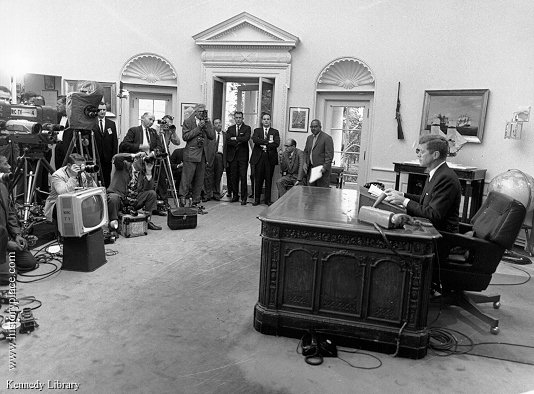
In June, Kennedy Gives Speech, endorsing civil rights agenda and calling for federal legislation to end segregation in public accommodations and racial discrimination in employment.
Kennedy Gives Nationally-Televised Speech on Civil Rights
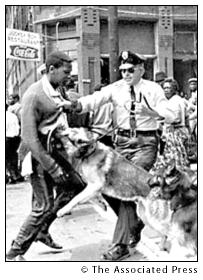
The speech comes one month after SCLC Children's Campaign in Birmingham and Gov. George Wallace's "Stand in the Schoolhouse Door" and two months before civil rights groups' March on Washington
The Children's Campaign in Birmingham, May 1963
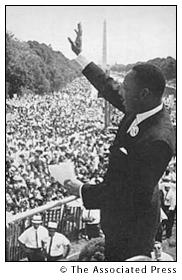
- The March on Washington, Aug. 1963. King Describes Vision of a Nation without Racial Barriers or Tensions
Dr. King at the March on Washington, August 1963
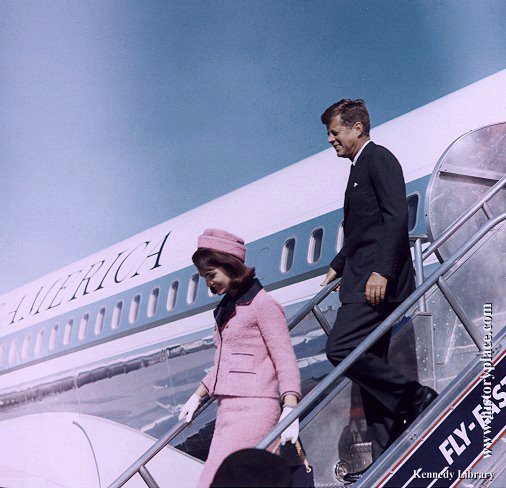
- The Kennedy Assassination: End or Beginning? Did the Assassination End Historic Opportunity for Racial Change? Or did it galvanize popular support for Civil Rights Movement and Other Domestic Reforms?
President & Mrs. Kennedy Arrive in Dallas, Nov.ember 1963









